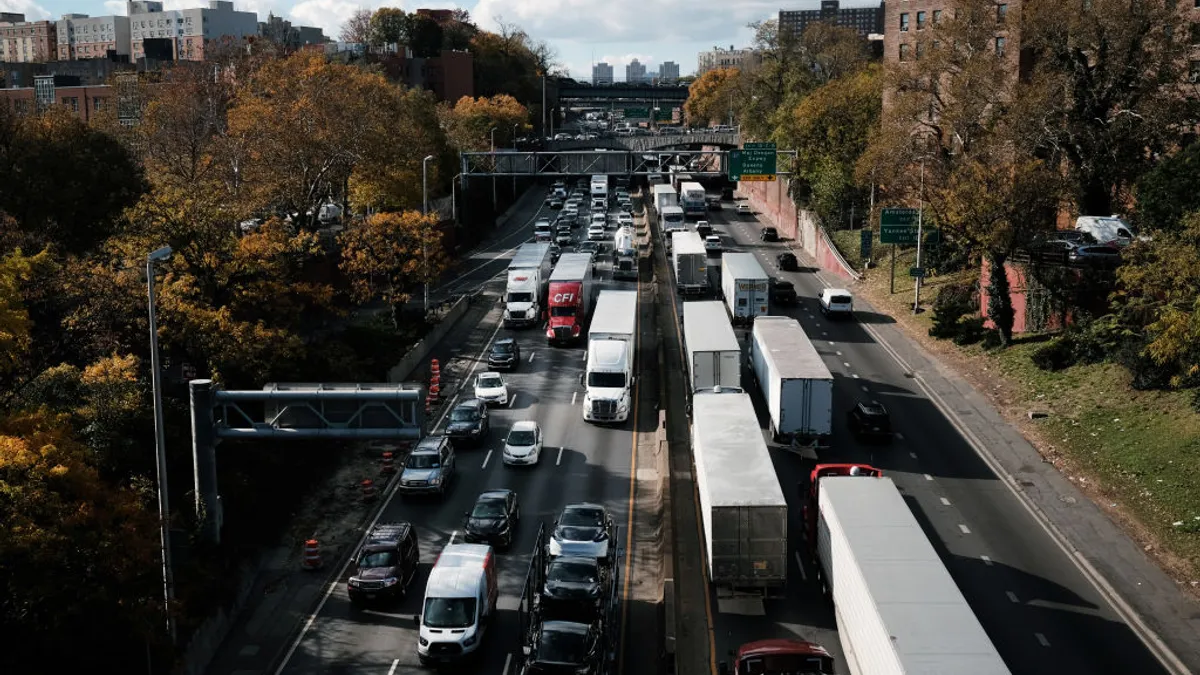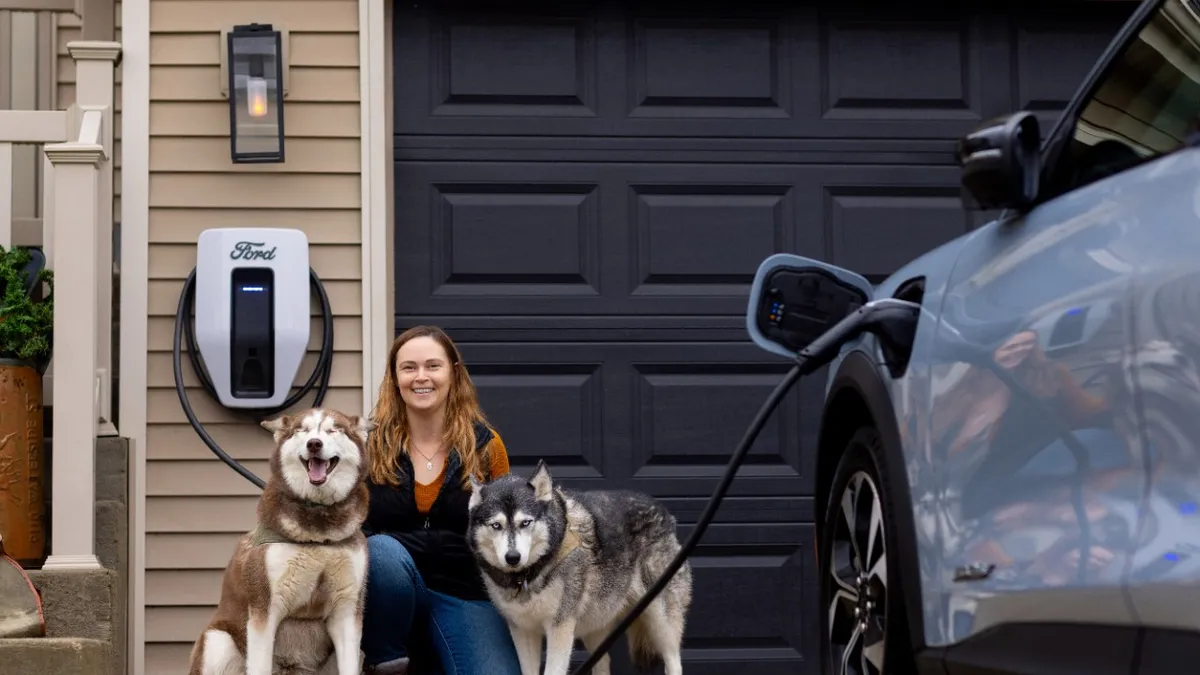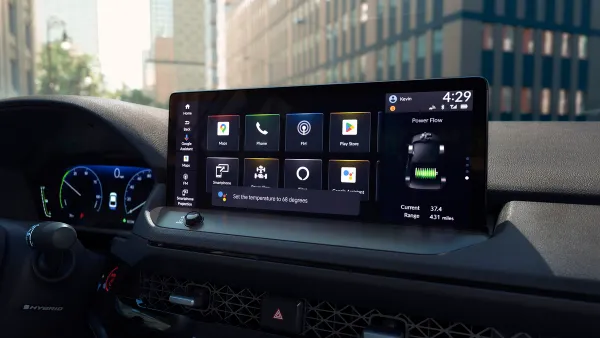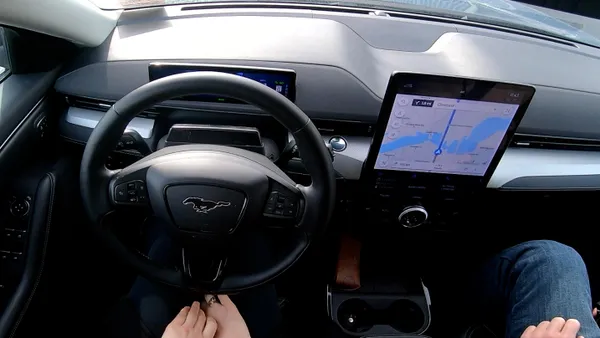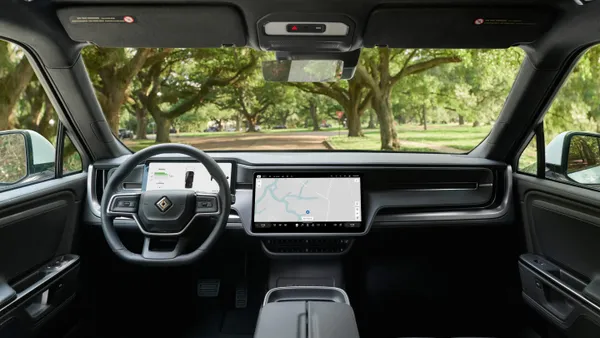A proposed regulation would require new vehicles over 10,000 pounds to be equipped with automatic emergency braking systems.
The Federal Motor Carrier Safety Administration and National Highway Traffic Safety Administration jointly announced a notice of proposed rulemaking Thursday regarding automatic emergency braking systems, known as AEB.
AEB systems use multiple sensor technologies and sub-systems to detect when a vehicle could crash and automatically apply brakes or exert more braking force if needed, the agencies noted.
The proposal calls for making the system work at speeds ranging from 6 mph to roughly 50 mph and phasing the requirement in over a three-to-five-year period for newly manufactured Class 3 to Class 8 vehicles.
The proposed rule carries various benefits, depending on who you ask. The government and public value the measure for its potential to reduce fatalities, injuries and crashes. For the trucking industry, the changes could also help with reducing the fallout that comes with crashes, even though the devices would raise up-front costs.
The up-front cost for installing the system, labor included, is $396 per vehicle, according to the proposed rule. The idea is to prevent at least 19,118 crashes, save 155 lives and prevent 8,814 injuries annually.
The agencies will accept public comments on the policy proposal over a 60-day period.
AEB restrictions have been a long time coming
AEB has already become standard on passenger vehicles, and industry stakeholders have floated the idea of a heavy-duty vehicle mandate for some time.
Some, like the Insurance Institute for Highway Safety, have published research over the years saying AEB technology would significantly reduce accident rates. And back in 2015, groups including the Truck Safety Coalition, the Center for Auto Safety, Road Safe America and Advocates for Highway and Auto Safety petitioned the NHTSA to require that heavy-duty vehicle manufacturers install forward collision avoidance and mitigation systems.
The Department of Transportation is acting now with the proposed rule after it was required to do so by the Infrastructure Investment and Jobs Act of 2021.
Trucking groups express opposing views
In response to the new rule, the American Trucking Associations again threw its support behind the requirement.
“With NHTSA’s recent regulation requiring AEB on all new passenger vehicles, this proposal for heavy-duty trucks is timely and appropriate,” ATA Vice President of Safety Policy Dan Horvath said in a statement. “The trucking industry supports the use of proven safety technology like automatic emergency braking.”
But when a 2021 bill called for change, the Owner-Operator Independent Drivers Association questioned the mandate, saying AEB involved unwarranted activations, false alarms and issues with controlling trucks in inclement weather.
An OOIDA spokesperson told Transport Dive in an email the trade group has long argued the technology needs to be perfected and performance issues resolved before a mandate is implemented.
“NHTSA is currently investigating 250,000 heavy-duty trucks equipped with AEB that may inaccurately identify objects and cause unexpected stops,” the spokesperson wrote. “Drivers will also need more assurances that AEB technology will work in all types of road and weather conditions.”



